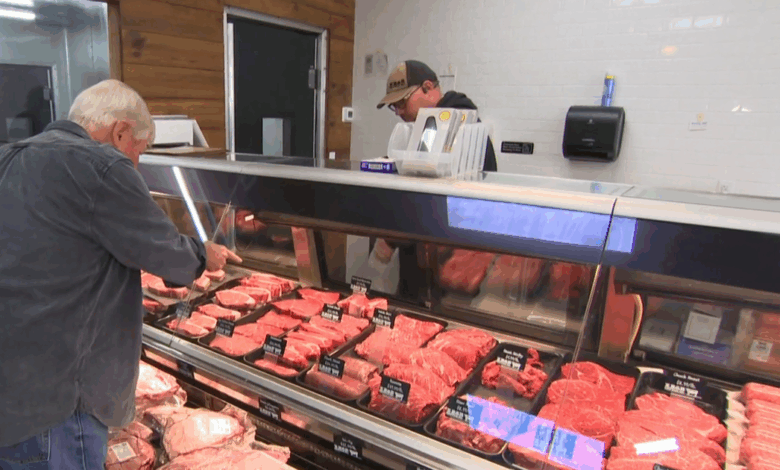U.S. beef prices reach record highs as cattle industry struggles to keep costs down

The rising cost of groceries, particularly meat, is putting a strain on families like Darlowe Torkelson’s in Argyle, Texas. Torkelson shared that their dinner shopping list now consists of just one sirloin steak and one potato, reflecting the impact of skyrocketing prices on everyday meals. The average cost of ground beef has hit a record high of $5.80 per pound, a 50% increase from five years ago.
Rancher Stephen Kirkland, owner of the Z Bar Cattle Company near Fort Worth, has been grappling with absorbing these price hikes at his butcher shops. He noted the significant increase in the cost of purchasing cattle, which has risen from $1,500 to nearly $2,400 per steer within a year. This surge in prices extends to other aspects of cattle farming, including feed, land, and financing, leading to the lowest U.S. cattle herds in over 70 years.
Kim Radaker Bays, another rancher in the area, highlighted the challenges of balancing the cost of maintaining the herd with the potential market value of the cattle. With droughts affecting grass availability for feeding cows, she emphasized the financial burden of keeping non-pregnant cows, opting to sell them instead. As beef prices are projected to continue rising through 2025, producers like Kirkland are faced with the necessity of increasing prices to maintain profitability and sustainability.
While the exact tipping point for consumers facing excessively high beef prices remains uncertain, Kirkland emphasized the need to adjust prices in response to escalating production costs. As the industry grapples with supply shortages and economic pressures, the future of meat prices and consumer affordability remains a pressing concern for both producers and consumers alike.
This article was rewritten and adapted from a CBS News report by Jason Allen, a correspondent based in Dallas/Fort Worth, who has been closely following the impact of rising meat prices on local communities.





